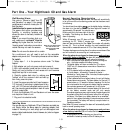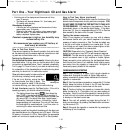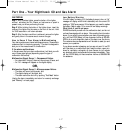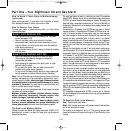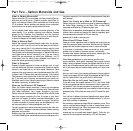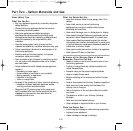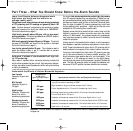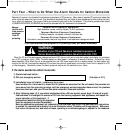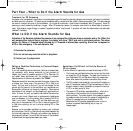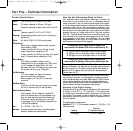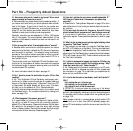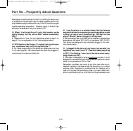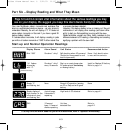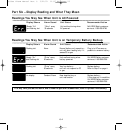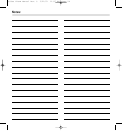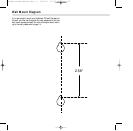
Part Four – What to Do if the Alarm Sounds for Gas
Calling a Qualified Technician to Find and Repair
the Problem
If you call a qualified service technician (such as a licensed heat-
ing contractor, utility service technician or fuel provider) to
inspect your home for possible sources of CO or Gas leak. Do
not restart these appliances until the problem is corrected.
Request service for as soon as possible, like TODAY.
Please be aware that some service technicians may charge a fee
to inspect your home, even if the source of CO or Gas is not
found. You may wish to find out if you will be charged for the
service and the amount of the fee before you request service.
Some public utilities do not charge for inspection. Some service
technicians do not charge if you purchased your appliance from
them. To know for sure, you need to ask before the technician
comes to your home. Repair work or replacement of appliances
may be necessary to fix the problem that is creating the CO or
Gas in your home. Remember, a CO and Gas alarm can only
warn you of the presence of CO or Gas, it does not prevent CO
or Gas from occurring, nor can it solve an existing CO or Gas
problem.
Because you’ve provided ventilation by leaving your windows
and doors open, the CO or Gas buildup may have dissipated by
the time help responds. Although your problem may appear to
be temporarily solved, it’s crucial that the source of the problem
is determined and appropriate repairs are made.
What to DO if the Alarm Sounds for Gas
Activation of the Gas alarm indicates the presence of an explosive Gas, which can cause an explosion and/or fire.
When the
unit senses either natural Gas or propane, the display will show “GAS” and emit a loud alarm pattern. The alarm
pattern for Gas is a 1/2 second beep followed by a 1/2 second of silence then repeating. Know how to respond to
a CO or Gas emergency.
If the unit alarms for Gas:
1) Evacuate the premises.
2) Do not activate any electrical switch or telephone.
3) Contact your fire department
Treatment for CO Poisoning
Any person who is suspected to have carbon monoxide poisoning should leave the potentially dangerous environment, get fresh air immediately
and seek care from a physician. CO poisoning can be determined by a simple blood test, called a “carboxyhemoglobin” test. This test measures
the amount of carbon monoxide in the bloodstream. For this test to be accurate, it must be done immediately after CO exposure. Acute CO
poisoning is usually treated by breathing in oxygen. When CO poisoning is severe, (for example, when there is an altered state of conscious-
ness), high pressure oxygen therapy in a special “hyperbaric chamber” may be used. A physician will make this determination and administer
treatment if necessary.
Sometimes it’s Difficult to Find the Source of
CO in a Home
It can be difficult for responders to locate the source(s) of CO if:
• The house was ventilated before they arrived and the fresh
air caused the CO to dissipate. The peak level function on
your Nighthawk CO and Gas alarm helps the responders
know how severe the problem was before they arrived.
• The CO problem was caused by a source that fluctuates on
and off, sometimes creating CO and sometimes not. Such a
situation makes it nearly impossible to pinpoint the source
of CO in a short period of time.
• The cause of CO problem was backdrafting – when air in
a chimney or flue is sucked into the home instead of
venting outside. The exact situation that created a negative
air pressure inside the home (the cause of backdrafting) is
difficult to recreate during an investigation for CO.
Sometimes the CO problem disappears when a door or
window is opened. Backdrafting may or may not
happen again.
4-2
CO/Gas Alarm Manual Rev. C 3/21/01 11:37 AM Page 18



